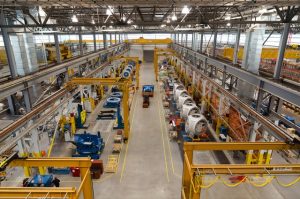
Planing and shaping are two common processes performed in the manufacturing industry. Manufacturing companies rely on these processes to manipulate the size and shape of raw materials, thereby leading to the production of finished goods. Planing and shaping aren’t the same, however. While they share some common characteristics, they are two unique manufacturing processes with different characteristics. What’s the difference between planing and shaping exactly?
Overview of Planing
Planing is a common manufacturing process that involves pressing and rotating a workpiece against a fixed and stationary cutting tool. As the workpiece rotates, the cutting tool removes material from it. It’s called “planing” because the cutting tool produces a plane on the surface of the workpiece.
During planing, a stationary cutting tool will dig into a rotating workpiece. Because the workpiece rotates — and the cutting tool remains stationary — it will develop a sculpted surface. Also known as a plane, this sculpted surface is the primary characteristic of planing.
Overview of Shaping
Shaping is a separate manufacturing process that, like planing, is designed to remove material from a workpiece. Shaping is distinguished from planing in the sense that the workpiece’s and cutting tool’s operations are reversed. In planing, the workpiece rotates while the cutting tool remains stationary. In shaping, the cutting tool rotates while the workpiece remains stationary.
Shaping is used to change the size and shape of a workpiece. Like planing, it will remove material from the workpiece. The cutting tool will press against the stationary workpiece while removing material from it. Unlike planing, however, it doesn’t create a sculpted surface.
The Rise of Milling and Turning
Milling and turning have become increasingly popular alternatives to planing and shaping. Milling is a manufacturing process that uses a rotating cutting tool to remove material from a stationary workpiece, whereas turning is a manufacturing process that uses a stationary cutting tool to remove material from a rotating workpiece.
Milling essentially uses the same mechanism to manipulate the size and shape of a workpiece as shaping. In both milling and shaping, the workpiece remains stationary while the cutting tool rotates and presses against it. In planing and turning, on the other hand, the workpiece rotates while the cutting tool remains stationary.
Some manufacturing companies continue to planing and shaping, though many have since switched to milling and turning. Milling and turning are considered easier and more efficient, so they’ve become popular alternatives to planing and shaping.
